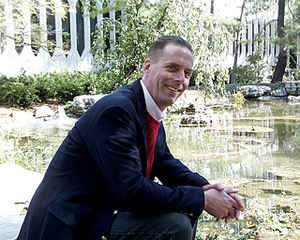
The Whole Earth Catalog turned 50 this year. It was in the 1980 edition of this classic publication that this writer stumbled across and embraced a small article which listed, “A Basic 10 Records of American Composers”. It was written by one Peter Garland and forever influenced most of my subsequent listening choices and purchases. For the record they are:
The Complete Music of Carl Ruggles (recently released on CD Other Minds OM 1020-21-2)
Piano Music of Henry Cowell (Folkways FM 3349)
Ameriques, Arcana, Ionisation by Edgar Varese (Columbia M 34552)
Peaens, Stars, Granites: Music by Dane Rudhyar and Ruth Crawford Seeger (CRI S 247)
Ives: Three Places in New England, Copland: Appalachian Spring (Sound 80 DLR 101)
Music of Silvestre Revueltas (RCA)
Conlon Nancarrow: Complete Studies for Player Piano (Other Minds CD 1012-1015-2)
Lou Harrison: Pacifika Rondo and other works (Desto DC 6478)
Harry Partch: Delusion of the Fury (Columbia M2 30576)
John Cage: Three Dances for Two Pianos, Steve Reich: Four Organs (Angel S 36059)
And I start here to illustrate the range of this still too little known composer, musicologist, writer, musician. Peter Garland (1952- ) doesn’t even have a dedicated website as of this writing and this list helps to put him in a context. But a quick look at Google, Wikipedia, and Baker’s Biographical Dictionary will confirm that Garland is indeed a prolific composer as well as an accomplished and dedicated musicologist. The list of albums reflect far ranging tastes and interests. That 1980 article serves to reflect how his scholarship reached effectively beyond academia and reached a much wider audience and the same wide embrace is slowly being realized about his musical output.

Peter Garland
He studied at Cal Arts with James Tenney and Harold Budd. He started Soundings Press after attending a workshop with Dick Higgins. Soundings press published articles by Garland and other musicologists. Garland has focused on Native American and Latin American indigenous musics and is regarded as an expert in these areas. Hie own music employs a variety of styles including minimalism and some use of folk melodies but he doesn’t really sound like anyone else.
His compositions almost seem secondary to his academic pursuits and, despite tantalizing descriptions of Garland’s performances in places like EAR magazine his music was hard to come by for some time. There have been a few recordings and, for those who don’t know his work, here is a little discography:
- 1982 Matachin Dances (EP, Cold Blue)
- 1986 Peñasco Blanco (Cold Blue, reissued on Nana + Victorio, 1993)
- 1992 Border Music (¿What Next?, reissued on OO Disc, 2002)
- 1992 Walk in Beauty (New Albion)
- 1993 Nana + Victorio (Avant)
- 2000 The Days Run Away (Tzadik)
- 2002 Another Sunrise (Mode)
- 2005 Love Songs (Tzadik)
- 2008 Three Strange Angels (Tzadik) reissue of Border Music expanded with live recordings
- 2009 String Quartets (Cold Blue)
- 2011 Waves Breaking on Rocks (New World)
- 2015 After the Wars (Cold Blue) EP with Sarah Cahill
- 2017 The Birthday Party (New World)
Fortunately there are a few record producers who have recognized Garland’s talents. And it should come as no surprise that these producers are of the independent label variety. Starkland Records is indeed one of those independents with a reliable nose/ear for good new music and have chosen to record a major opus, The Landscape Scrolls.
This choice embodies much of what is great about Peter Garland. In this work we get exposed to his scholarship of the stories and symbols of the scrolls as well as some insight to his interest in experimental and unusual instruments. This is in fact a percussion piece but not the percussion music of your mother’s generation.
Commissioned by and dedicated to percussionist John Lane, The Landscape Scrolls (2010-2011) depicts the 24-hour day cycle in five movements. Garland remarks the work was influenced by Indian ragas, Japanese haiku poetry, and, especially, the famous Landscape Scroll of the Four Seasons by Japan’s 15th century painter Sesshu.
Each of the five movements is a metaphorical monochromatic study, more about resonance and space than melody or harmony: mid-day (Chinese drums); afternoon (rice bowls); after dark (triangles); late (glockenspiel); early morning (tubular bells). Garland notes that, after the fact, he was likely influenced by his fascination with the single-tonal color paintings of Barnett Newman.
John Luther Adams, himself a composer of some significant percussion music lately, provides most of the lucid liner notes. Clearly Garland is respected by his fellow artists. This release provides a fine opportunity to get to know this American master through this major opus. As usual the Starkland production is very well recorded and sounds great. This one was really done right.